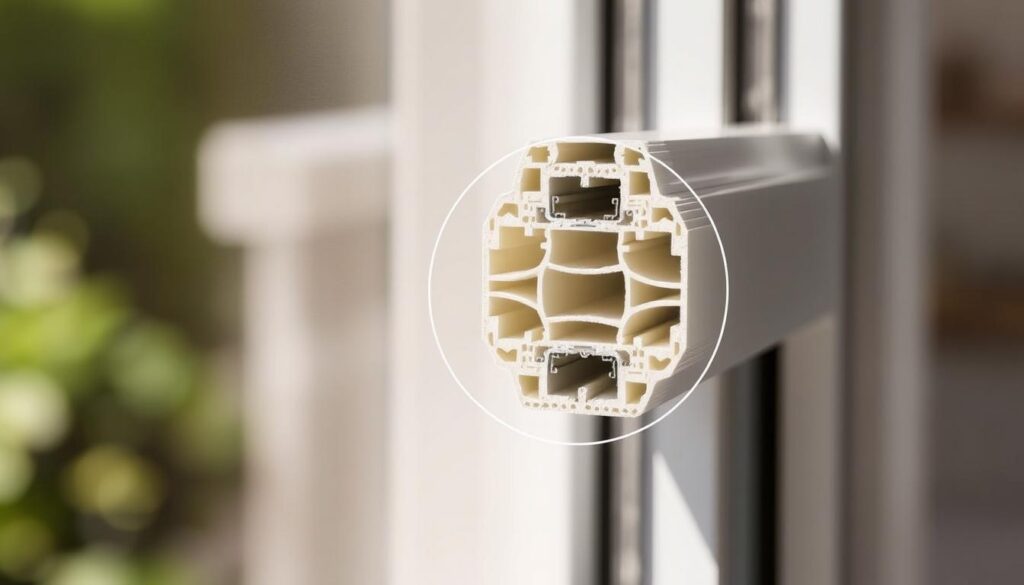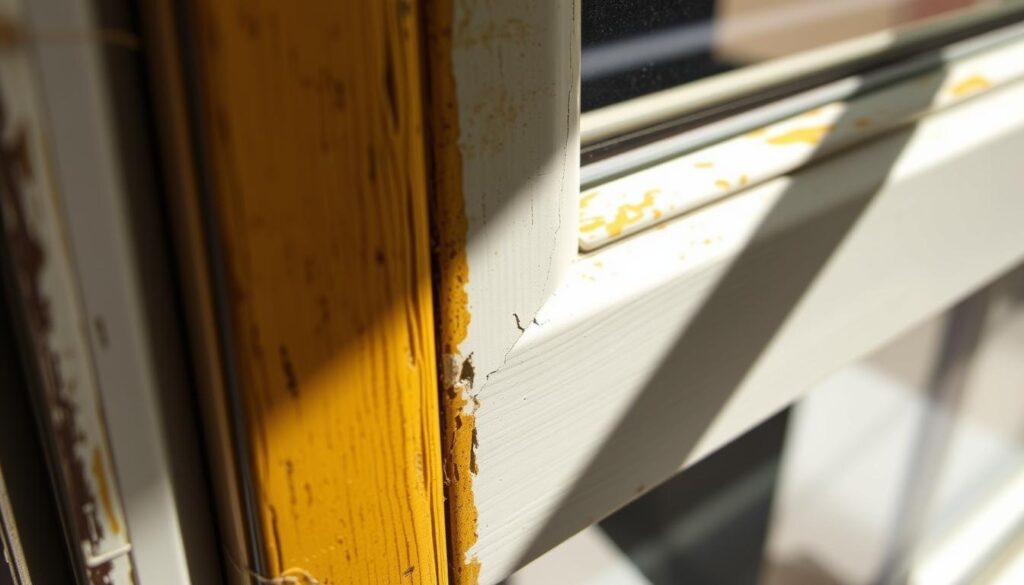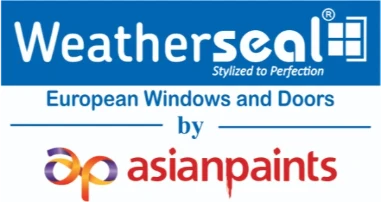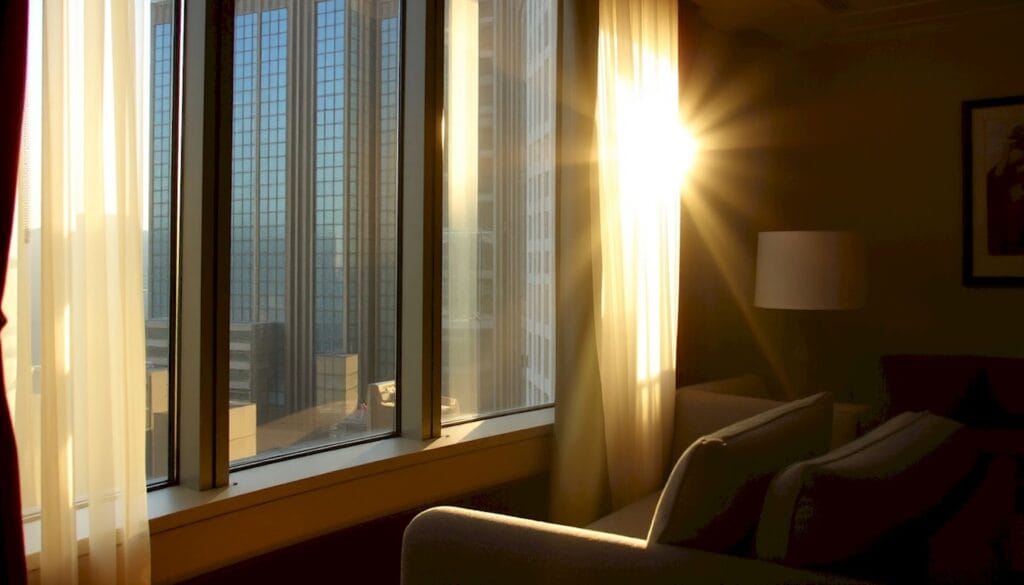“Materials are the poetry of science, and understanding their interactions with nature reveals their true resilience.” – Dr. Abdul Kalam
For construction pros and homeowners in India, knowing how sunlight affects uPVC is key. UV rays can cause problems for materials like uPVC, leading to slow damage over time.
uPVC is a common material used in many things, like windows and pipes. It changes when it gets a lot of sunlight. This can affect how well it works and its structure.
Looking into how uPVC reacts to UV rays helps us find ways to keep it safe from sun damage.
Key Takeaways
-
- UV radiation can significantly impact uPVC material properties
-
- Continuous sunlight exposure triggers polymer degradation mechanisms
-
- Chemical composition determines uPVC’s resilience against UV damage
-
- Specialized protective treatments can mitigate sunlight effects
-
- Regular maintenance prevents premature material deterioration
Understanding uPVC and Its Properties
uPVC, or unplasticized polyvinyl chloride, is changing the game in construction. It’s a special material that makes windows and outdoor spaces better. It’s tough and works well in tough weather.

uPVC is different from regular plastic. It doesn’t have plasticizers, which makes it stronger and more durable.
Chemical Composition Breakdown
uPVC has a special mix that makes it stand out:
-
- It has a lot of chlorine for better chemical resistance
-
- Its molecules are stiff, so it doesn’t bend easily
-
- Strong bonds between carbon and chlorine keep it stable
Natural Characteristics and Applications
uPVC is great for being outside because it can handle heat well. It also:
-
- Stays strong against weather and UV rays
-
- Needs little care
-
- Lasts a long time, even in extreme temperatures
Benefits in Construction
Construction experts like uPVC for many reasons. It’s affordable, saves energy, and lasts a long time. It’s perfect for windows and outside jobs.
uPVC is a game-changer in building materials, with unmatched performance and reliability.
Architects and builders see uPVC as a green, top-notch choice for modern buildings.
Is uPVC affected by sunlight?
uPVC materials face big challenges when they get a lot of sunlight. The sun’s rays can start chemical changes that weaken the material. This can affect how it looks and works.

Ultraviolet radiation is a big problem for uPVC surfaces. When uPVC fades, several things happen:
-
- Colors change because molecules break down
-
- The surface gets chalky from polymer wear
-
- The material gets weaker over time
Many things affect how uPVC weathers. Direct sunlight makes colors fade faster. This turns bright colors into dull, grayish ones.
Research shows that uPVC’s strength varies. Different ways of making it can help protect it from the sun. Polymer scientists say to choose high-quality uPVC with special additives.
Signs of sun damage include:
-
- Surface gets rough
-
- Material becomes less flexible
-
- Small cracks can form
Knowing about these changes helps people choose and care for uPVC better.
Protecting uPVC from Sun Damage
Understanding how to protect uPVC from the sun is key. Sunlight can harm uPVC, affecting its look and function. So, it’s important to take steps to keep it safe.
UV Stabilizers and Additives
UV stabilizers are added to uPVC during making. They help protect against sun damage. These chemicals stop the material from breaking down and losing color.
Preventive Maintenance Tips
Keeping uPVC in good shape is easy with regular care. Clean it gently and avoid harsh cleaners. Use protective coatings and place it where it won’t get too much sun.
Professional Treatment Options
Experts can fix sun-damaged uPVC. They use special treatments to fix surfaces and add new protection. Regular checks by pros can catch problems early.
Need help protecting your uPVC? Call our experts at +91 767651 9999 or email sales@weatherseal.in.
FAQ
How does sunlight affect uPVC materials?
Sunlight can cause UV degradation in uPVC. This leads to color fading, surface chalking, and weakening over time. The UV radiation breaks down the polymer chains, affecting the material’s strength and look.
Can uPVC completely withstand direct sunlight?
While uPVC resists sunlight, long exposure can cause wear. Modern uPVC has UV stabilizers to help. But, some damage is possible over many years.
What are the primary signs of sun damage in uPVC?
Sun damage in uPVC shows as color changes, surface chalking, and reduced flexibility. It can also lead to cracking and a loss of strength. These signs appear gradually, becoming more obvious over years.
How long can uPVC typically resist sun damage?
High-quality uPVC with UV stabilizers can resist sun damage for 10-20 years. This depends on sunlight intensity, location, and environment. Regular care and treatments can help it last longer.
Are there ways to protect uPVC from sun damage?
Yes, you can protect uPVC with UV-resistant coatings and protective films. Regular cleaning and using UV-stabilized products also help. Consider partial shading or strategic placement to reduce sunlight.
Does uPVC color impact its resistance to sunlight?
Darker uPVC absorbs more heat and degrades faster than light-colored uPVC. Light colors reflect more solar radiation. This makes them more resistant to UV damage and keeps them looking better longer.
Can professional treatments help protect uPVC from sun damage?
Professional treatments like UV-resistant sealants and cleaning can greatly improve uPVC’s sun resistance. Regular maintenance extends its lifespan outdoors. These treatments restore its protective qualities.

